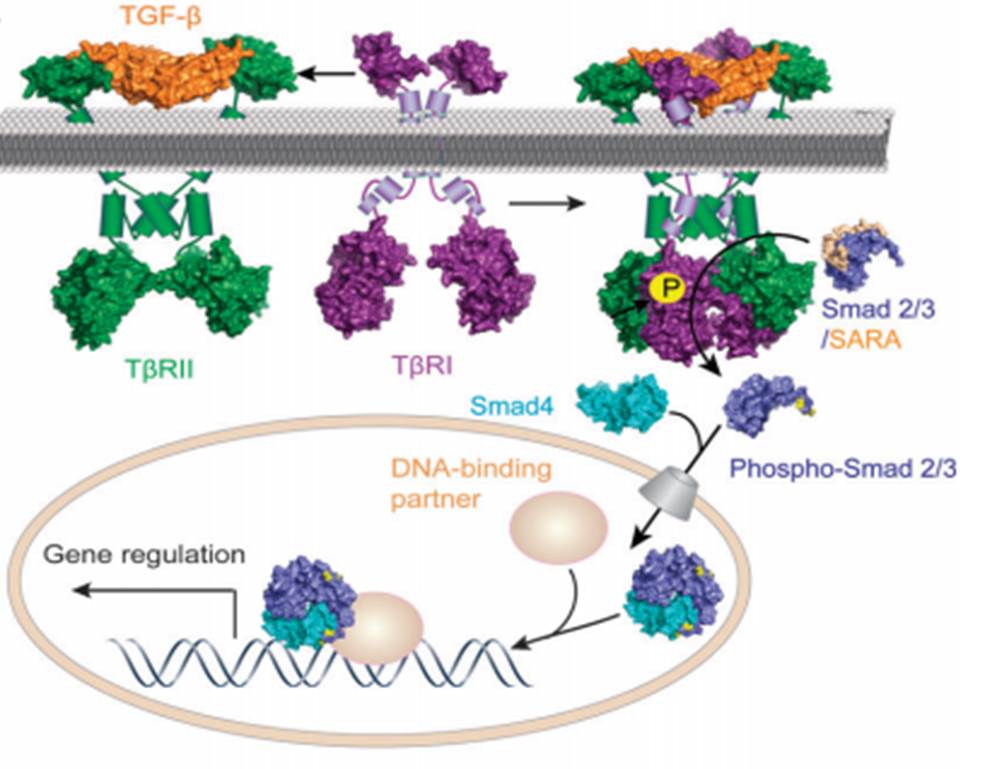User:Gabriel Pons/Sandbox 3
From Proteopedia
Contents |
TGFβ signalling pathway
The TGFbeta signalling pathway has an impact on a variety of cellular processes including cell proliferation, differentiation, apoptosis, growth, development, adhesion, neuronal growth, immune surveillance, tissue homeostasis and many others. Moreover, dysregulation of the normal functioning of any element is associated with pathological conditions, such as autoimmune and inflammatory diseases, cancer and cardiovascular diseases
TGFbeta superfamily ligands transduce their signals by binding and bringing together two single-pass transmembrane receptor serine/threonine kinases called type I and II receptors. This allows the phosphorylation and activation of type I receptor by type II receptor. Once type I receptor is activated propagates the signal by phosphorylating Smad proteins, which form a heterotrimeric complex. Those complexes are then translocated into the nucleus where, in conjunction with other nuclear cofactors, regulate the transcription of target genes

Ligands
The TGFbeta superfamily of cytokines can be divided in two major ligand subfamilies by sequence similarities. On one hand TGFbeta/Inhibin/Nodal/Activin subfamily and on the other hand BMP (Bone Morphogenetic Protein)/AMH (Anti-Müllerian Hormone)/GDF (Growth and Differentiation Factor) subfamily. As shown here , the members of the superfamily share a high conserved tridimensional structure
TGFβ isoforms
